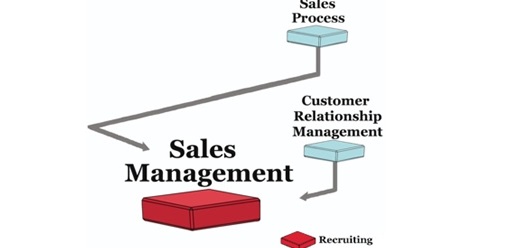Course Name | Sales Management | |||||
Type of Course | Elective – Marketing | |||||
Course Code | MBM21E03 | |||||
Course Summary & Justification | This course allows the students to explain the various concepts of sales and distribution,aspects of sales force and distribution channel,steps of sales planning process. This course also enables the students to develop an understanding of the concept of recruitment,selection,training ,motivation etc for sales force management. | |||||
Semester | 3/4 | Credits | 4 | |||
Total Student Learning Time (SLT) | Learning Approach | Lecture | Tutorial | Practical | Others | Total Learning Hours |
Authentic learning Collaborative learning Case based learning | 60 | 5 | - | 15 | 80 | |
Pre-requisite | NIL As per the requirement of the course | |||||
Others- Library, field work, seminar and assignment preparations, test, journal, discussion etc. | ||||||
COURSE OUTCOMES (CO)
CO No. | Expected Course Outcome Upon completion of this course, students will be able to; | Learning Domains | PSO No. |
1 | Describe and explain sales planning process. | A | 1,2,3 |
2 | Should be able to forecast sales objective for any organisation. | E | 2,3,5, |
3 | Being given a sales plan, one can design strategies for sales force management | C | 2, 3, 5, 7 |
4 | Compare and design the optimal channel for an organisation. | An | 5, 8,11 |
5 | Compare and select the best alternative for logistic design. | An | 5,6,7,8 |
*Remember (R), Understand (U), Apply (A), Analyse (An), Evaluate (E), Create (C), Skill (S), Interest (I) and Appreciation (Ap) | |||
COURSE CONTENT
Hrs | CO.No. | ||
Unit 1 | 14Hrs | ||
1.1 | Sales as a function of Marketing Management | 2 | 1 |
1.2 | Theories ofSelling – Buyer Seller Dyads, AIDAS Theory, Right Set of Circumstances Theory, BuyingFormulaTheory,BehaviouralEquationTheory,sellingprocess. | 4 | 1,2 |
1.3 | SalesManagement Functions &Responsibilities, Qualities of salesmen. | 2 | 1 |
1.4 | Concept of Personal selling and steps involved in Personal Selling. | 3 | 1,2,3 |
1.5 | Sales organisations and its purposes, Basic types of sales organisations | 3 | 2,4 |
Unit 2 | 16Hrs | ||
2.1 | Sales Planning; Forecasting; Qualitative and Quantitative Methods | 2 | 2 |
2.2 | Sales Territories – Concept of Sales territory | 2 | 3,4 |
2.3 | Procedures for setting up Sales territories – Deciding assignment of sales personnel to territories | 3 | 3,4 |
2.4 | Routing and Scheduling of Sales Force | 3 | 2,3 |
2.5 | Sales budget – Purpose, form and content of sales budgets | 3 | 1,2,3 |
2.6 | Sales Quota – Concept, Types of quota, Quota setting procedures, Administering the quota system | 3 | 2,3 |
Unit 3 | 12Hrs | ||
3.1 | Sales Force Management: Estimation of Sales Force; Workload, Breakdown and Incremental Analysis | 4 | 1,3 |
3.2 | Selection and Training – Sales job analysis, Sales job description, Recruiting Sales persons. Selection – Screening, Interviewing/Testing, Induction and placement | 4 | 3 |
3.3 | Building Sales training programmes, Deciding Training Contents, Selecting training methods, Execution and evaluation of training programmes | 4 | 3 |
Unit 4 | 8 Hrs | ||
4.1 | Motivating Salesmen – Concept of motivation. | 2 | 2,3 |
4.2 | Need for motivating sales persons, Motivation and morale of sales persons | 2 | 3 |
4.3 | Application of different motivation theories in sales management | 2 | 3 |
4.4 | Compensating Salesmen- Requirement of a good sales compensation plan, Types of compensation plans, Steps in devising a sales compensation plan. | 2 | 2,3 |
Unit 5 | 10 Hrs | ||
5.1 | Performance Evaluation for Salesmen | 2 | 3,4 |
5.2 | Standards of performance, Relation of performance, standard to personal selling objectives, Recording actual performance, Evaluation | 3 | 2,3 |
5.3 | Sales Meetings - Planning and staging sales meetings, Sales contests | 3 | 3 |
5.4 | Sales Control – The sales audit, Sales analysis Marketing cost analysis. | 2 | 3,4 |
Teaching and Learning Approach | Classroom Procedure (Mode of transaction) Authentic learning, case-based learning, collaborative learning, seminar, group activities.
| ||||||||||||||||||||||||||||||||
Assessment Types |
Mode of Assessment · Continuous Assessment (CA) · Tests · Seminar Presentation – a theme is to be discussed and identified to prepare a paper and present in the seminar · Assignments · End Semester examination
|
REFERENCES
1. William L. Cron, Thomas E. Decarlo, Sales Management: Concepts and Cases, 10thed, Wiley.
2. Stanton, Buskirk and Spiro: Management of a Sales Force, Irwin Publishers.
3. Pradip Mallik, Sales Management, Oxford University Press.
4. Charles Futrell : ABC’s of Selling, Irwin Publishers.
5. Anderson, Hair and Bush: Professional Sales Management, McGraw Hill International editions.
6. Still, R. R. &Cundiff, E. W., Govoni, N. A. P. (2007). Sales Management. Pearson Education, New Delhi.
7. Jobber, David and Lancaster, Geoffery (2006), Selling and Sales Management, Pearson
8. N K Sharma, Sales Management, ABD Publishers 2001
9. Ingren La Forze Arsla, Sales Management, 5th Edition, Thomson Southwest (2004)
10. Ruston S Danar, Sohrab R Danar, Nusli R Danar, Salesman Ship & Publicity, 16thEdition, Vikas Publishers, 1996

- Teacher: Dr Johney Johnson